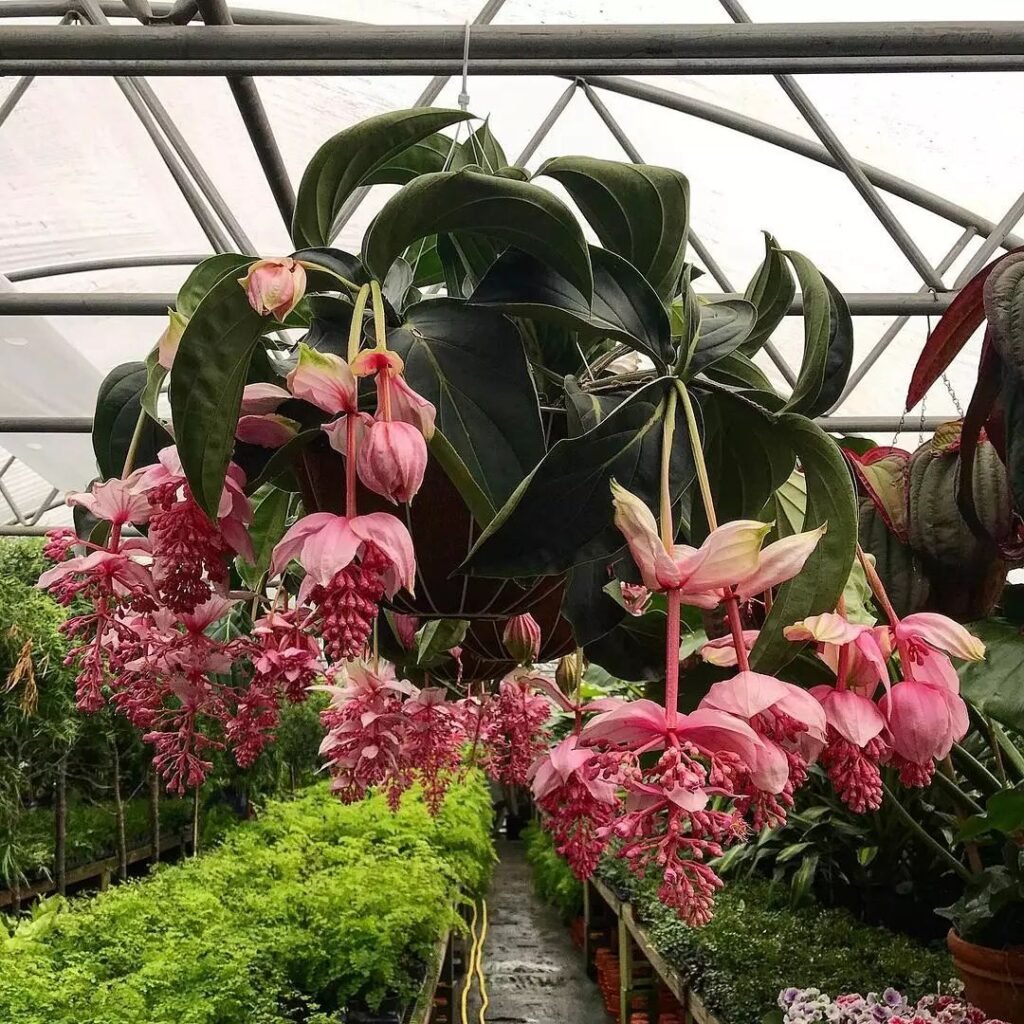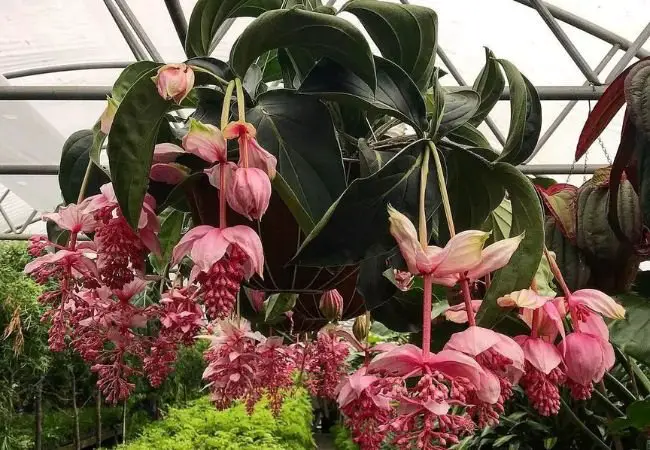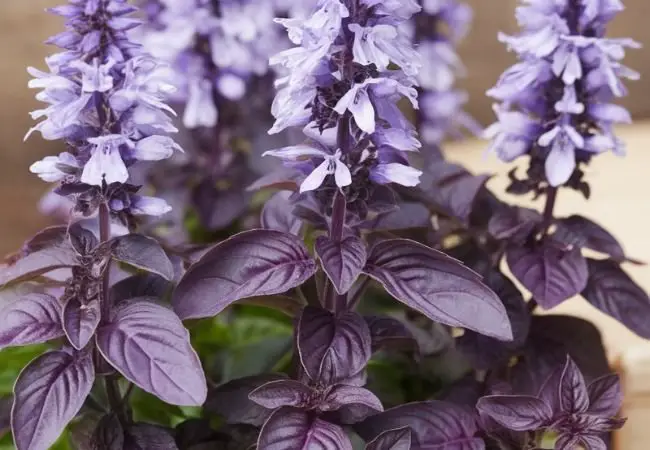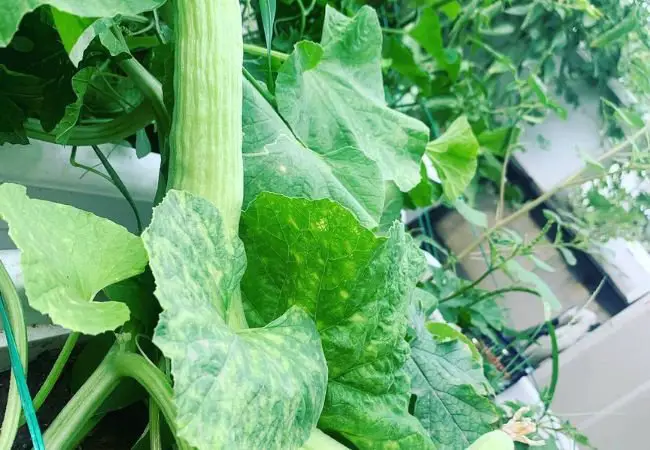Discover how to grow and care for Medinilla magnifica, the stunning Philippine Orchid. Learn expert tips on cultivation, propagation and troubleshooting for this exotic beauty.
Medinilla magnifica, commonly known as the Philippine Orchid or Rose Grape, is a stunning tropical plant prized for its large, drooping pink flower clusters and glossy green leaves. It requires warm temperatures, high humidity, bright indirect light and well-draining soil to thrive. Regular pruning and proper watering are essential for optimal growth and blooming.
Introduction to Medinilla Magnifica

As a tropical plant specialist with over two decades of experience, I’m thrilled to share my expertise on cultivating the breathtaking Medinilla magnifica. This exotic beauty can transform any space into a tropical paradise with its spectacular blooms and lush foliage.
Understanding Medinilla Magnifica
Medinilla magnifica, despite its common name “Philippine Orchid,” is not actually an orchid. It belongs to the family Melastomataceae and is native to the Philippines. This evergreen shrub is known for its large, leathery leaves and impressive pink flower clusters that can hang up to 18 inches long.
For more botanical information, visit the Missouri Botanical Garden’s Medinilla page.
Growing Conditions for Medinilla Magnifica
Light Requirements
Medinilla magnifica thrives in:
- Bright, indirect light
- Protection from direct sunlight, which can scorch leaves
Temperature and Humidity
These tropical plants prefer:
- Temperatures between 60-80°F (15-27°C)
- High humidity levels (60-80%)
For tips on increasing humidity for houseplants, check out University of Vermont Extension’s guide.
Soil and Potting
Use a well-draining potting mix:
- Equal parts peat moss, perlite, and orchid bark work well
- Ensure the pot has adequate drainage holes
Caring for Your Medinilla Magnifica
Watering
Proper watering is crucial:
- Keep soil consistently moist but not waterlogged
- Allow the top inch of soil to dry between waterings
- Reduce watering in winter when growth slows
Fertilizing
Feed your Medinilla during the growing season:
- Use a balanced, water-soluble fertilizer monthly
- Dilute to half-strength to avoid over-fertilization
For more on fertilizing houseplants, visit Clemson Cooperative Extension’s guide.
Pruning and Maintenance
Regular pruning helps maintain shape and promote blooming:
- Remove spent flower clusters
- Prune after flowering to encourage bushier growth
- Clean leaves regularly to remove dust
Propagation Techniques
Stem Cuttings
The most common method to propagate Medinilla magnifica:
- Take 4-6 inch stem cuttings with at least two leaf nodes
- Remove lower leaves and dip the cut end in rooting hormone
- Plant in a well-draining potting mix
- Keep warm and humid until roots develop
Air Layering
For larger plants:
- Make a small incision on a healthy stem
- Apply rooting hormone and wrap with moist sphagnum moss
- Cover with plastic wrap until roots form
- Cut below the new roots and pot the new plant
For detailed propagation techniques, check out the University of Florida’s IFAS Extension guide.
Troubleshooting Common Issues
Leaf Yellowing
- Cause: Often due to overwatering or poor drainage
- Solution: Adjust watering schedule and ensure proper drainage
Lack of Blooms
- Cause: Insufficient light or improper pruning
- Solution: Increase light exposure and prune at the right time
Pests
Common pests include mealybugs and spider mites:
- Inspect regularly for signs of infestation
- Treat with insecticidal soap or neem oil as needed
For more on houseplant pests, visit Penn State Extension’s pest management guide.
Displaying Your Medinilla Magnifica
Styling Tips
Showcase your Medinilla’s beauty:
- Use as a stunning focal point in bright rooms
- Pair with other tropical plants for a lush display
- Consider hanging baskets to highlight the drooping flower clusters
Growing Medinilla magnifica can be a rewarding experience for plant enthusiasts. With its spectacular blooms and lush foliage, this tropical beauty can bring a touch of the exotic to any indoor space. Remember that consistency in care, particularly with regards to humidity and watering, is key to success with this plant. By following the guidelines in this guide, you’ll be well on your way to enjoying the magnificent blooms of your own Medinilla magnifica.
For more information on tropical houseplants, visit the Royal Horticultural Society’s tropical plants guide.
For more gardening tips and plant care guides, visit usagardenhub.com.






